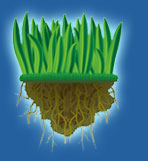The goal of life is living in
 Buffer
Strips
Buffer
Strips
Buffer
strips are strips or tracts of land in permanent
vegetation designed to intercept pollutants, control erosion and
manage other environmental concerns. Also known as conservation
strips, buffer strips, strategically placed can be an
invaluable
tool in managing surface water within a watershed. Their value
extends far beyond traditional agricultural application.
In urban areas of home and highway construction, conservation
strips can stabilize soils subject to erosion from wind and
water runoff. These same strips act as filters catching
potential toxins and debris from roadways and large tracts of
paved parking areas before they enter our valued waterways.
Conservation strips can also be utilized in flood prone areas to
manage overflow.
The design of buffer or conservation strips can be from simple
to complex and is dictated by the scope of the potential problem
area. A simple design may consist of grasses and other
indigenous perennials while a more complex design may mimic a
complete ecosystem, including annuals, perennials, shrubs, vines
and trees. Such areas also have great value in providing a
natural habitat for wildlife.
Rain Gardens
A rain garden is a planted depression
that often fills with rainwater or runoff
from streets or parking lots. In the urban
landscape, proper placement of a rain garden can provide the
same benefits as larger buffer strips in an agricultural
setting. Rain gardens can be creatively designed and have
practical applications in home landscapes and urban common
areas. Plantings in these types of areas can at times be
submerged so appropriate variety selection is essential in the
overall success and effectiveness of the rain garden.

